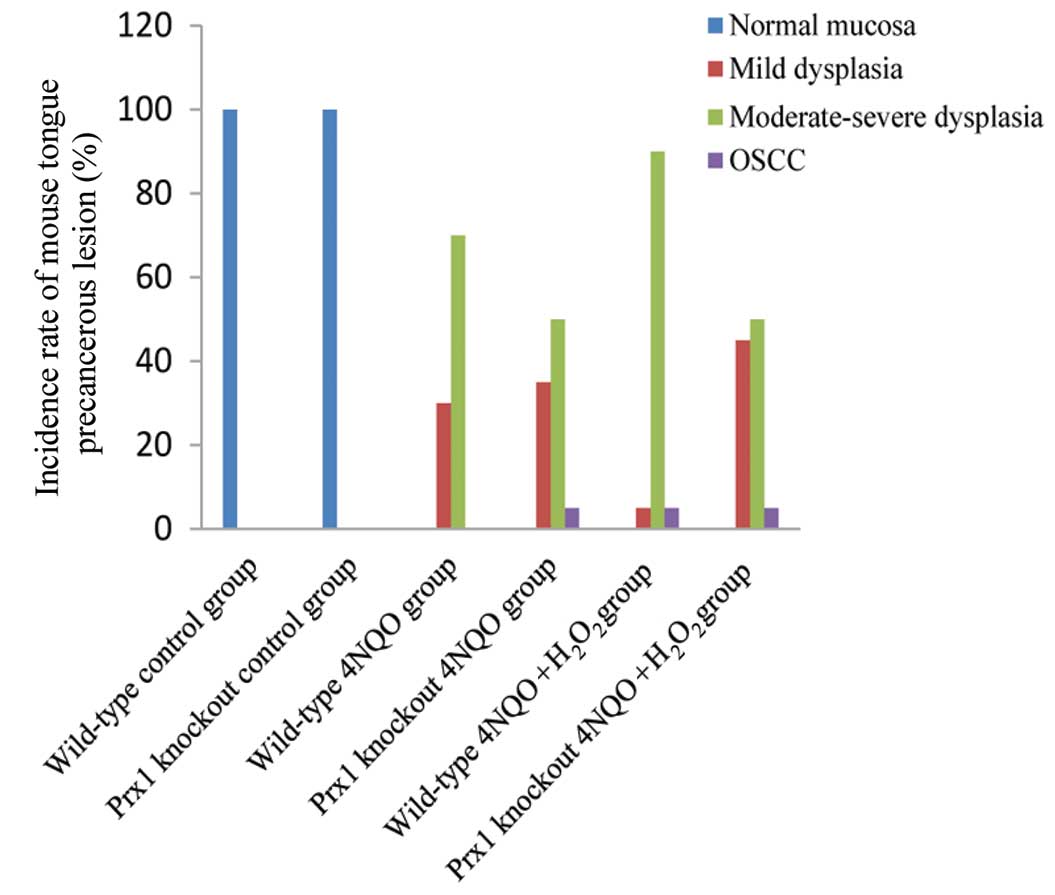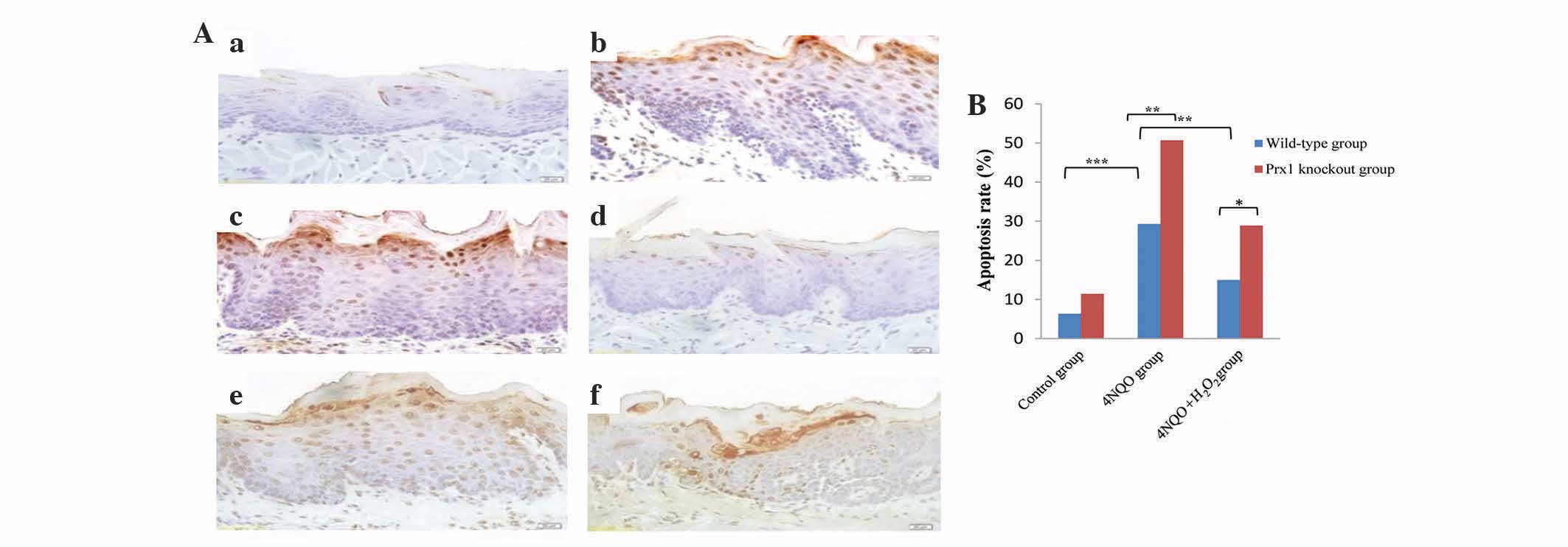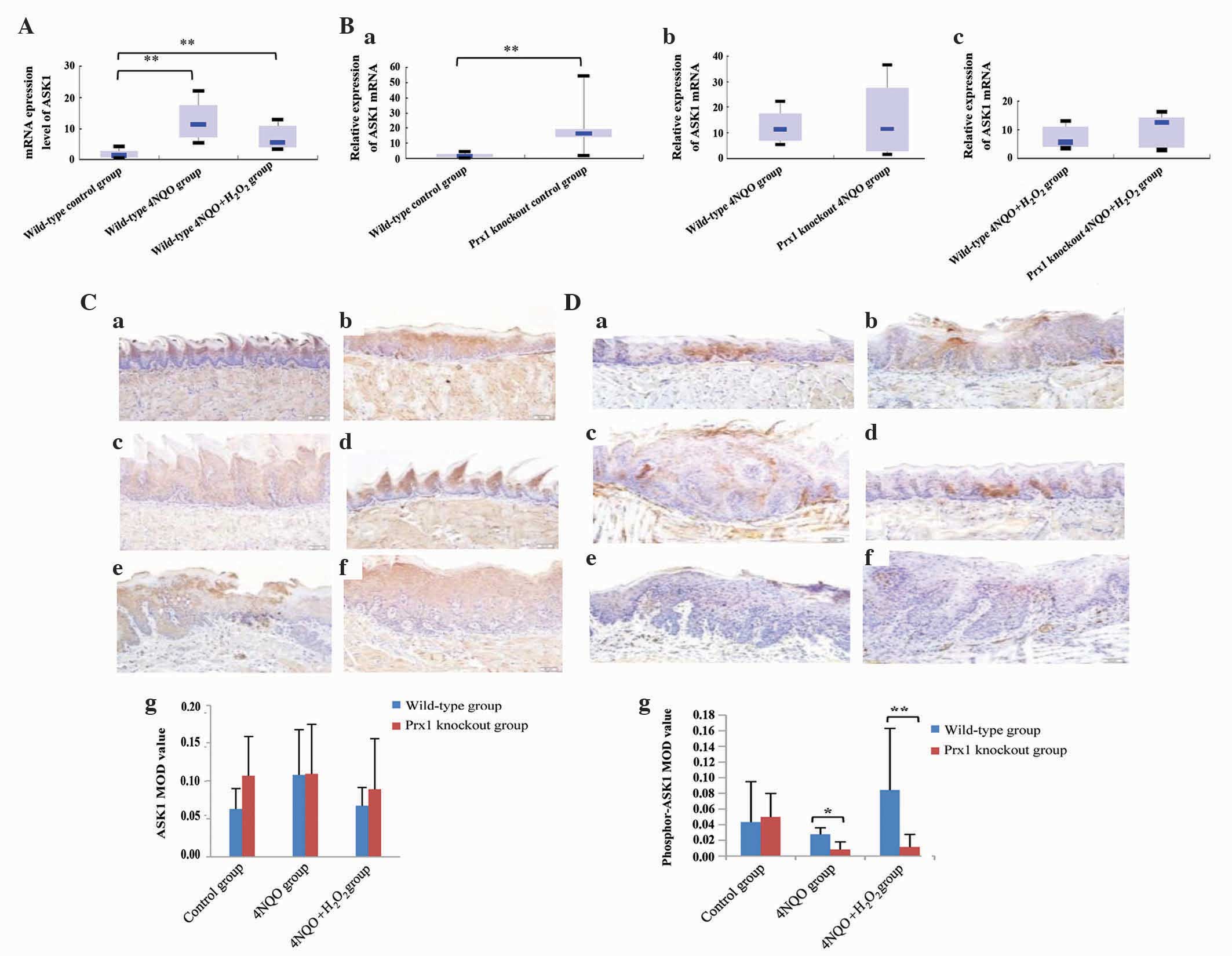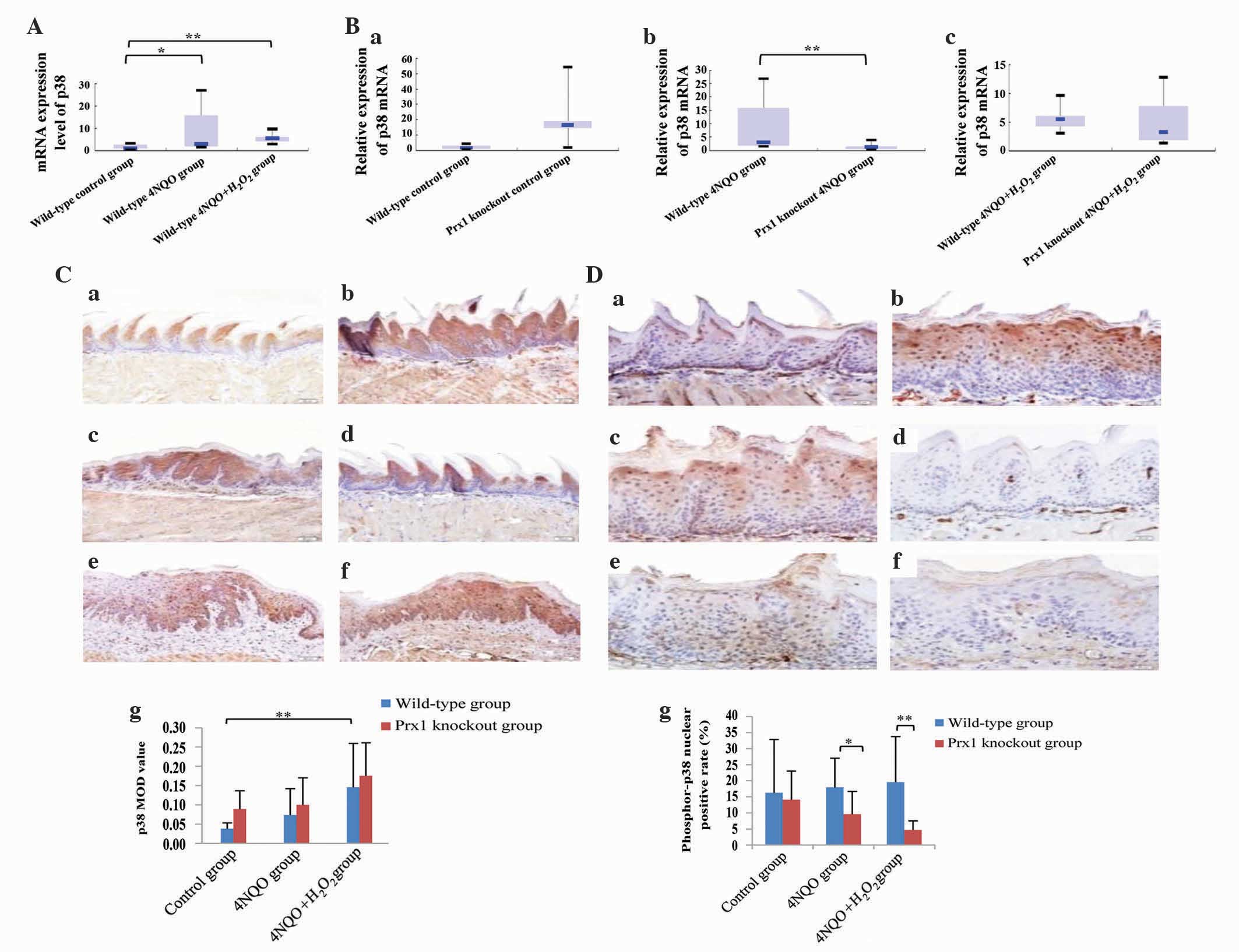|
1
|
van der Waal I: Oral potentially malignant
disorders: Is malignant transformation predictable and preventable?
Med Oral Patol Oral Cir Bucal. 19:e386–e390. 2014. View Article : Google Scholar : PubMed/NCBI
|
|
2
|
Amaqasa T, Yamashiro M and Uzawa N: Oral
premalignant lesions: From a clinical perspective. Int J Clin
Oncol. 16:5–14. 2011. View Article : Google Scholar : PubMed/NCBI
|
|
3
|
Wamakulasuriya S: Global epidemiology of
oral and oropharyngeal cancer. Oral Oncol. 45:309–316. 2009.
View Article : Google Scholar : PubMed/NCBI
|
|
4
|
Van der Waal I, Schepman KP, Vander Meij
EH and Smeele LE: Oral leukoplakia: A Clinicopathological review.
Oral Oncol. 33:291–301. 1997. View Article : Google Scholar : PubMed/NCBI
|
|
5
|
Van der Waal I and Axell T: Oral
leukoplakia: A proposal for uniform reporting. Oral Oncol.
38:521–526. 2002. View Article : Google Scholar : PubMed/NCBI
|
|
6
|
Banoczy J, Gintner Z and Dombi C: Tobacco
use and oral leukoplakia. J Dent Educ. 65:322–327. 2001.PubMed/NCBI
|
|
7
|
Reichart PA: Identification of risk groups
for oral precancer and cancer and preventive measures. Clin Oral
Investing. 5:207–213. 2001. View Article : Google Scholar
|
|
8
|
Zhang XL and Reichart PA: A review of
betel quid chewing, oral cancer and precancer in mainland China.
Oral Oncology. 43:424–430. 2007. View Article : Google Scholar : PubMed/NCBI
|
|
9
|
Chen CL, Chi CW and Liu TY: Hydroxyl
radical formation and oxidative DNA damage induced by area quid in
vivo. J Toxicol Environ Health A. 65:327–336. 2002. View Article : Google Scholar : PubMed/NCBI
|
|
10
|
Christen AG, Swanson BZ, Glover ED and
Henderson AH: Smokeless tobacco: The folklore and social history of
snuffing, sneezing, dipping, and chewing. J Am Dent Assoc.
105:821–829. 1982. View Article : Google Scholar : PubMed/NCBI
|
|
11
|
Oda D, Nguyen MP, Royack GA and Tong DC:
H2O2 oxidative damage incultured oral
epithelial cells: The effect of short-term vitamin C exposure.
Anticancer Res. 21:2719–2724. 2001.PubMed/NCBI
|
|
12
|
Wu HJ, Chi CW and Liu TY: Effects of PH on
nicotine-induced DNA damage and oxidative stress. J Toxicol Environ
Health A. 68:1511–1523. 2005. View Article : Google Scholar : PubMed/NCBI
|
|
13
|
Bahar G, Feinmesser R, Shpitzer T,
Popovtzer A and Nagler RM: Salivary analysis in oral cancer
patients: DNA and protein oxidation, reactive nitrogen species, and
antioxidant profile. Cancer. 109:54–59. 2007. View Article : Google Scholar : PubMed/NCBI
|
|
14
|
Circu ML and Aw TY: Reactive oxygen
species, cellular redox systems, and apoptosis. Free Radic Biol
Med. 48:749–762. 2010. View Article : Google Scholar : PubMed/NCBI
|
|
15
|
Rhee SG and Woo HA: Multiple functions of
peroxiredoxins: Peroxidases, sensors and regulatoers of the
intracellular messenger H2O2 and protein
chaperones. Antioxid Redox Signal. 15:781–794. 2011. View Article : Google Scholar : PubMed/NCBI
|
|
16
|
Kang SW, Rhee SG, Chang TS, Jeong W and
Choi MH: 2-Cys perosiredoxin function is intracellular signal
transduction: Therapeutic implications. Trends Mol Med. 11:571–578.
2005. View Article : Google Scholar : PubMed/NCBI
|
|
17
|
Yanagawa T, Iwasa S, Ishii T, Tabuchi K,
Yusa H, Onizawa K, Omura K, Harada H, Suzuki H and Yoshida H:
Peroxiredoxin 1 expression in oral cancer: A potential new tumor
marker. Cancer Lett. 156:27–35. 2000. View Article : Google Scholar : PubMed/NCBI
|
|
18
|
Yanagawa T, Omura K, Harada H, Ishii T,
Uwayama J, Nakaso K, Iwasa S, Koyama Y, Onizawa K, Yusa H and
Yoshida H: Peroxiredoxin 1 expression in tongue squamous cell
carcinomas as involved in tumor recurrence. Int J Oral Maxillofac
Surg. 34:915–920. 2005. View Article : Google Scholar : PubMed/NCBI
|
|
19
|
Ge Li-hua, Hou Min, Yang Jing, Chen Tong
and Tang Xiao-fei: Prx1 overexpression in human oral leukoplakia.
Beijing Kou Qiang Yi Xue Za Zhi. 20:135–137. 2012.(In Chinese).
|
|
20
|
Nishitoh H, Saitoh M, Mochida Y, Takeda K,
Nakano H, Rothe M, Miyazono K and Ichijo H: ASK1 is essential for
JNK/SAPK activation by TRAF2. Mol Cell. 2:389–395. 1998. View Article : Google Scholar : PubMed/NCBI
|
|
21
|
Saitoh M, Nishitoh H, Fujii M, Takeda K,
Tobiume K, Sawada Y, Kawabata M, Miyazono K and Ichijo H: Mammalian
thioredoxin is a direct inhibitor of apoptosis signal-regulating
kinase (ASK) 1. EMBO J. 17:2596–2606. 1998. View Article : Google Scholar : PubMed/NCBI
|
|
22
|
Takeda K, Matsuzawa A, Nishitoh H and
Ichijo H: Roles of MAPKKK ASK1 in stress-induce cell death. Cell
Struct Funct. 28:23–29. 2003. View Article : Google Scholar : PubMed/NCBI
|
|
23
|
Kim SY, Kim TJ and Lee KY: A novel
function of peroxiredoxin 1 (Prx-1) in apoptosis signal-regulating
kinase 1 (ASK1)-mediated signaling pathway. FEBS Lett.
582:1913–1918. 2008. View Article : Google Scholar : PubMed/NCBI
|
|
24
|
Zhang Min, Liang Hong, Quan Xiong-Zhi,
Miao Cong-cong and Tang Xiao-Fei: Establishment of Prx 1 gene
knockout mice. Beijing Kou Qiang Yi Xue Za Zhi. 20:246–248.
2012.(In Chinese).
|
|
25
|
Livak KJ and Schmittgen TD: Analysis of
relative gene expression data using real-time quantitative PCR and
the 2(−Delta Delta C(T)) Method. Methods. 25:402–408. 2001.
View Article : Google Scholar : PubMed/NCBI
|
|
26
|
Kramer IR, Lucas RB, Pindborg JJ and Sobin
LH: Definition of leukoplakia and related lesions: An aid to
studies on oral precancer. Oral Surg Oral Med Oral Pathol.
46:518–539. 1978. View Article : Google Scholar : PubMed/NCBI
|
|
27
|
Chen CL, Lin DF, Chang WT, Huang WC, Teng
CF and Lin YS: Ceramide induces p38 MAPK and JNK activation through
a mechanism involving a thioredoxin-interacting protein-mediated
pathway. Blood. 111:4365–4374. 2008. View Article : Google Scholar : PubMed/NCBI
|
|
28
|
Park GB, Kim YS, Lee HK, Song H, Cho DH,
Lee WJ and Hur DY: Endoplasmic reticulum stress-mediated apoptosis
of EBV-transformed B cells by cross-linking of CD70 is dependent
upon generation of reactive oxygen species and activation of p38
MAPK and JNK pathway. J Immunol. 185:7274–7284. 2010. View Article : Google Scholar : PubMed/NCBI
|
|
29
|
Zhang J, Tang J, Cao B, Zhang Z, Li J,
Schimmer AD, He S and Mao X: The natural pesticide dihydrorotenone
induces human plasma cell apoptosis by triggering endoplasmic
reticulum stress and activating p38 signaling pathway. PLoS One.
8:e699112013. View Article : Google Scholar : PubMed/NCBI
|
|
30
|
Ichijo H, Nishida E, Irie K, ten Dijke P,
Saitoh M, Moriquchi T, Takaqi M, Matsumoto K, Miyazono K and Gotoh
Y: Induction of apoptosis by ASK1, a mammalian MAPKKK that
activates SAPK/JMK and p38 signaling pathway. Science. 275:90–94.
1997. View Article : Google Scholar : PubMed/NCBI
|
|
31
|
Turner-Ivey B, Manevich Y, Schulte J,
Kistner-Griffin E, Jezierska-Drutel A, Liu Y and Neumann CA: Role
for Prdx1 as a specific sensor in redox-regulated senescence in
breast cancer. Oncogene. 32:5302–5314. 2013. View Article : Google Scholar : PubMed/NCBI
|
|
32
|
Kim YJ, Lee WS, Ip C, Chae HZ, Park EM and
Park YM: Prx1 supppresses radiation-induced c-Jun NH2-terminal
kinase signaling in lung cancer cells through interaction with the
glutathione S-transferase Pi/c-Jun NH2-termianl kinase complex.
Cancer Res. 66:7136–7142. 2006. View Article : Google Scholar : PubMed/NCBI
|
|
33
|
Nakagawa H, Hirata Y, Takeda K, Hayakawa
Y, Sato T, Kinoshita H, Sakamoto K, Nakata W, Hikiba Y, Omata M, et
al: Apoptosis signal-regulating kinase 1 inhibits
hepatocarcinogenesis by controlling the tumor-suppressing function
of stress-activated mitogen-activated protein kinase. Hepatology.
54:185–195. 2011. View Article : Google Scholar : PubMed/NCBI
|
|
34
|
Yan W, Arai A, Aoki M, Ichijo H and Miura
O: ASK1 is activated by arsenic trioxide in leukemic cells through
accumulation of reactive oxygen species and may play a negative
role in induction of apoptosis. Biochem Biophys Res Commun.
355:1038–1044. 2007. View Article : Google Scholar : PubMed/NCBI
|
|
35
|
Park JM, Greten FR, Li ZW and Karin M:
Macrophage apoptosis by anthrax lethal factor through p38 MAP
kinase inhibition. Science. 297:2048–2051. 2002. View Article : Google Scholar : PubMed/NCBI
|
|
36
|
Lee YJ, Song DS, Yoo JS, Hyung KE, Lee MJ,
Moon YH, Lee IH, Go BS, Park SY and Hwang KW: Protective functionsm
of peroxiredoxin-1 against cytokine-induced MIN6 pancreatic β-cell
line death. Can J Physiol Pharmacol. 91:1037–1043. 2013. View Article : Google Scholar : PubMed/NCBI
|
|
37
|
Sun QK, Zhu JY, Wang W, Lv Y, Zhou HC, Yu
JH, Xu GL, Ma JL, Zhong W and Jia WD: Diagnostic and prognostic
significance of peroxiredoxin 1 expression in human hepatocellular
carcinoma. Med Oncol. 31:7862014. View Article : Google Scholar : PubMed/NCBI
|
|
38
|
Guo QJ, Mills JN, Bandurraga SG, Nogueira
LM, Mason NJ, Camp ER, Larue AC, Turner DP and Findlay VJ:
MicroRNA-510 promotes cell and tumor growth by targeting
peroxiredoxin1 in breast cancer. Breast Cancer Res. 15:R702013.
View Article : Google Scholar : PubMed/NCBI
|
|
39
|
Lennicke C, Rahn J, Lichtenfels R,
Wessjohann LA and Seliger B: Hydrogen peroxide-production, fate and
role in redox signaling of tumor cells. Cell Commun Signal.
13:392015. View Article : Google Scholar : PubMed/NCBI
|
|
40
|
Min SK, Lee SK, Park JS, Lee J, Paeng JY,
Lee SI, Lee HJ, Kim Y, Pae HO, Lee SK and Kim EC: Endoplasmic
reticulum stress is involved inn hydrogen peroxide induced
apoptosis in immortalized and malignant human oral keratinocytes. J
Oral Pathol Med. 37:490–498. 2008. View Article : Google Scholar : PubMed/NCBI
|
|
41
|
Arima Y, Nishiqori C, Takeuchi T, Oka S,
Morimoto K, Utani A and Miyachi Y: 4-Nitroquinoline 1-oxide forms
8-hydroxydeoxyguanosine in human fibroblasts through reactive
oxygen species. Toxicol Sci. 91:382–392. 2006. View Article : Google Scholar : PubMed/NCBI
|
|
42
|
Tang XQ, Chen J, Tang EH, Feng JQ and Chen
PX: Hydrogen peroxide preconditioning protects PC12 cells against
apoptosis induced by oxidative stress. Sheng Li Xue Bao.
57:211–216. 2005.PubMed/NCBI
|
|
43
|
Lee HT, Xu H, Ota-setlik A and Emala CW:
Oxidant preconditioning protects human proximal tubular cells
against lethal oxidant injury via p38 MAPK and heme oxygenase-1. Am
J Nephrol. 23:324–333. 2003. View Article : Google Scholar : PubMed/NCBI
|
|
44
|
Lin B, Tan X, Liang J, Wu S, Liu J, Zhang
Q and Zhu R: A reduction in reactive oxygen species contributes to
dihydromyricetin-induced apoptosis in human hepatocellular
carcinoma cells. Sci Rep. 4:70412014. View Article : Google Scholar : PubMed/NCBI
|



















